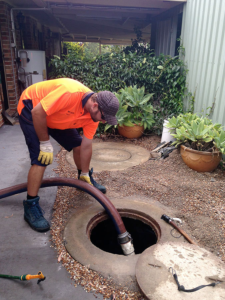After a numbing cream is smoothed over your face, the microneedling person moves a pen-shaped tool with tiny needles across your skin. The small needle wounds cause some bleeding and trigger your body’s healing process.
The skin-building collagen produced by these tiny abrasions smooths out fine lines and wrinkles, fades acne scars, and reduces the appearance of stretch marks. Some people need several monthly treatments to see results. Contact MICRONEEDLING SAN DIEGO now!

Microneedling is a minimally invasive procedure that causes small punctures in the skin. These small injuries prompt the body to heal the area by generating thicker, firmer skin and creating new collagen and other growth factors. These proteins are essential to keeping the skin smooth and wrinkle-free. The loss of these proteins is one reason the skin sags and develops fine lines and wrinkles as we age.
Although microneedling is safe for most people, it is not recommended for those with a bleeding disorder or who are taking medications that thin the blood. It also is not appropriate for those who are pregnant or have an open wound. A dermatologist can help you determine whether this treatment is right for you.
During the treatment, a pen-like device with tiny needles creates a series of pinpricks in the skin. The needles are very short and penetrate the upper layers of the skin rather than the deeper dermis. This allows the needles to work more efficiently and prevents damage to surrounding skin cells. The numbing medication applied to the skin can help reduce the pain associated with this procedure.
This technique is particularly effective for those who want to improve their appearance and address issues like acne scarring, large pores, fine lines, and sagging skin. It is also a good option for those with an uneven complexion who want to eliminate blackheads. These clogged pores are caused by oil that comes from hair follicles and is known as sebum. The microneedling treatment helps to release the sebum and remove the blackheads, leaving behind smoother skin.
After the treatment, you may experience redness and dry skin. This is normal and should only last a few days. During this time, you should avoid makeup and use sunscreen to protect your skin from sun damage. You should also be careful to apply a hyaluronic acid, growth factor, or peptide serum that has been specifically designed for this type of treatment.
You should always see a qualified cosmetic dermatologist before trying a microneedling treatment. They can recommend the best products and treatments for your needs. It’s also important to ask your cosmetic dermatologist about the safety of the microneedling device they use. The device should be cleaned after each use to ensure the highest level of hygiene.
It’s effective
If you’re looking for an effective skin-care procedure, microneedling may be just what you need. This treatment uses a handheld device with tiny needles that penetrate the skin, stimulating collagen production and helping to reduce scars and aging signs. However, it’s important to remember that microneedling is not a cure for all scars. It’s not as effective for pitted or linear scars, and it cannot be used on keloid scars, which are raised scars.
The process is fairly quick and painless, and doctors generally apply a topical anesthetic cream to help numb the area being treated. It’s also less painful than laser treatments or chemical peels, and it has a shorter recovery time. You can expect to see some redness and swelling after the treatment, but these symptoms typically only last a few days.
Your doctor will probably recommend using hyaluronic acid, growth factor, or peptide serum after your treatment to ensure the active ingredients reach the deeper layers of the skin. It’s also recommended that you avoid tanning or applying sunscreen to the treated area until it heals, which can take up to a week. You should also avoid using products that contain vitamin A, such as retinol or Retin-A, as these can irritate the skin and cause bleeding and bruising.
One of the biggest benefits of microneedling is that it can help you look younger. The tiny injuries caused by the needles stimulate your body’s wound-healing response, which boosts collagen and elastin levels, making fine lines and wrinkles appear less noticeable. The technique can also be used to treat acne scarring and other imperfections, such as enlarged pores.
While dermarolling is relatively safe, it’s important to see a dermatologist who has experience performing this procedure. Your dermatologist will examine your skin and make sure you’re a good candidate for it before performing the treatment. They’ll also tell you what to expect from the procedure and how long it will take to see results. In some cases, it can take up to a year for new tissue to grow and replace old scars.
It’s affordable
Microneedling is an effective treatment for scarring, uneven skin tone, pore size, and loose skin. It also reduces fine lines and wrinkles and can be combined with radiofrequency to tighten sagging skin. However, it is important to understand that this procedure can be expensive, and it may require multiple treatments for optimal results.
During the procedure, a doctor will make small pricks in the face using a pen-like tool with tiny needles. A numbing cream is usually applied before the treatment starts to minimize discomfort. The skin will then heal from the minor injuries caused by the needles, resulting in the production of collagen. This collagen will fill in the scars and smooth out fine lines. The process typically lasts about 30 minutes. Afterward, the doctor will apply a growth serum or calming treatment.
While it is possible to do DIY microneedling at home, it’s best to see a dermatologist. The at-home devices only penetrate the surface of the skin, whereas professional machines can go much deeper. Additionally, DIY devices aren’t sterilized correctly and can cause infections.
A good quality machine can cost anywhere from $200 to $700 per session. The more areas you want to treat, the more expensive it will be. Complementary treatments and topicals can increase the effectiveness of microneedling, but they’ll also add to the cost.
Despite its benefits, microneedling is considered an aesthetic procedure and isn’t covered by insurance. However, many clinics offer payment plans or financing options to help you afford the procedure. You may also be able to find a coupon for the procedure. Before scheduling a consultation, be sure to discuss your goals with your dermatologist so they can recommend the right course of treatment for you. They can also assess your skin to determine if it’s suitable for microneedling. In addition, you should avoid taking ibuprofen and other medications that can raise your sensitivity to the procedure. You should also skip products that can irritate the skin, like exfoliants and topical retinoids. Finally, you should prepare for redness and mild swelling after the treatment.
It’s quick
The microneedling process looks scary when you first hear about it. The idea of sticking needles in your face to draw blood is enough to scare you away, but if you look into it more, you’ll see that the procedure has many benefits. It can soften fine lines and wrinkles, reduce the size of pores, improve discoloration and hyperpigmentation, tighten skin, and even help with acne and acne scarring. It also requires no downtime, so it’s a great option for people who want to boost their appearance but aren’t ready for more invasive treatments like lasers and surgeries.
Before your treatment, you will have to schedule a consultation appointment so the doctor can examine your skin and ensure you are a good candidate for this type of procedure. Then, they will give you pre-treatment instructions to follow, such as limiting sun exposure and avoiding certain skincare products. You may also need to discontinue any retinols a few days before your appointment.
A numbing cream is applied to the treatment area before your appointment, and the microneedling pen is passed over the skin several times. Some people say that it feels like an electric toothbrush being used on their face. The treatment usually takes 10-20 minutes depending on the size of the treatment area.
After your treatment, it’s normal for your skin to be red and inflamed. That’s because your body is working hard to heal the microchannels it created. In the next two to five days, your skin will start sending all of those healing cells to the surface.
You will probably notice an improvement in your skin tone as soon as the redness subsides. But it may take a couple of weeks to see the results in terms of improved pore size and skin texture, reduced wrinkles, and less discoloration. It’s important to know that microneedling is not a quick fix, and most people need a series of treatment sessions to see real results.
A dermatologist will have the experience and knowledge to do a safe and effective microneedling treatment. If you try to do it yourself with a derma roller, make sure you use a high-quality numbing cream and sterilize the device before using it on your face. Using a reusable roller can be dangerous if it’s not properly disinfected and could result in infections such as abscesses.








